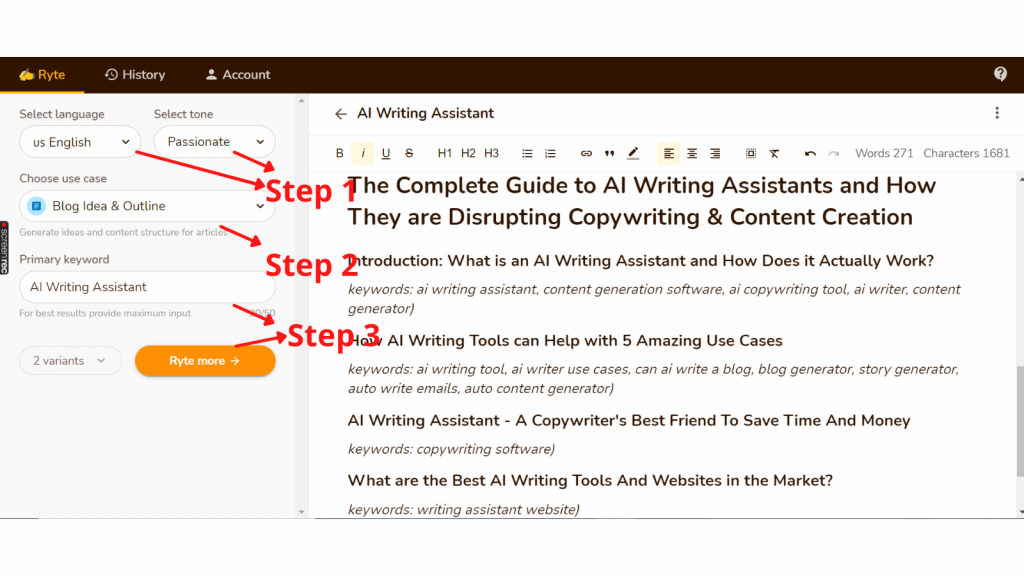The internet is a virtual space where the entire populace resides. As of January 2021, there were 4.66 billion active internet users worldwide, with the numbers constantly growing. The uses of the internet are as infinite as the users, from cooking recipes to access to research papers on astrophysics. The internet has it all.
The internet has also caused businesses to think differently about content as a whole. With businesses trying new ways to produce, publish and rank their content on search engines like Google. The only problem with this approach is its capital-intensive nature. This has led to the recent rise in AI-driven content.
Understanding Content Generating AI Software
AI-generated content, also known as NLG( Natural Language Generation), is a software that translates data into a human-friendly or readable format. Initially, results from the software sounded highly mechanical and over-computerised. However, with the advent of machine learning and big data, these problems have mostly been rectified. Though not perfect, this technology has now come a long way since its inception. It is projected that by 2030, AI will be an estimated $15.7 trillion in global GDP, with an increase of 26% from 2021.
How Does It Work?
Most AI software in content generation works on a template model. Let’s take the example of Rytr.
Rytr works as a simple writing assistant to write any form of content. It allows you to first choose from over 15 different languages it can write in. After that, it asks for the purpose of the content being written, i.e., email, blog or article. One can also choose a specific tone if needed. Finally, after selecting all the specifics, the AI asks for the data which needs to be inserted into the content and then the AI generates a result. The results depend heavily on the specificity and depth of the content given.
Limitations of AI-Generated Content
If you are worried that thousands of pages of instantly created AI algorithm-generated content will outrank your website, you couldn’t be more wrong. AI-generated content has multiple shortcomings.
AI software often needs human inputs regularly to create large sets of content. A single set of data can only produce a few lines or paragraphs of content that needs to be further altered to the specification of your industry and audience. They also need to be thoroughly proofread by a human, as they can often sound bland and straightforward even though they are grammatically correct. Though AI-generated content has come a long way, it’s still highly dependent on humans to make tailor-made content.
How to Use AI-Generated Content to Boost Your Ranking
Currently, AI-generated content is a great tool that can be leveraged but is not a stand-alone source of originally written content. Search engines like Google look for quantity and quality in the content when ranking pages in search results. You should leverage the software’s powerful features in the following ways to boost your ranking on search engines:
1. Use AI-generated content as a first draft
The biggest block for any writer is creating the first draft. First drafts often cause uncertainties and doubts, in turn hampering the momentum of writers. Using AI software by directly inputting data can help writers gain insight into possible approaches to explore, providing them which much-needed momentum. Using AI to create multiple first drafts quickly is a great way to produce high-quality content.
2. Use multiple software for a more refined product
Semi-finished results from AI software can further be refined by using applications such as Grammarly to get automated insights to make your content more engaging to your audience. AI content intelligence software also helps track the impact and effectiveness of the article and helps to make changes to improve quality and impact.
3. Add your own brand’s voice and branding to the content
Setting your content apart from others requires having a voice of your own. While AI helps you make faster and better content, it is your responsibility to make sure your content speaks to your brand’s personality. Using certain catchphrases, jargon and lingo can help set a certain tone that is unique to your brand.
Leveraging Factors Affecting Google Rankings
AI-generated content can be fine-tuned to produce engaging content on your website. But does that directly translate to having a higher ranking in Google searches? Google recently disclosed that content is not the only factor when considering where to rank a website in searches. Thus, the following are some factors to keep in mind while generating content with AI to gain better search rankings:
1. Quality over quantity
Google ranks web pages based on how relevant and in-depth their content is. Webpages with well-written content and appropriate industry lingo are more desirable by the Google Algorithm. Also, using audio and video modes alongside written content also helps it to be ranked higher. Thus, it’s a game of quality over quantity.
2. Focusing on developing mobile compatible websites
On November 4, 2016, Google announced mobile-first indexing, meaning that a website’s compatibility with mobile devices directly affects its search rankings. The internet has become dominated by mobile users, as 92.6% of all internet searches take place through mobile phones. This has made Google rank sites with mobile compatibility higher.
3. Faster loading speeds
Since Google has adopted mobile-first indexing, page speed has become more relevant than ever before. Pages with slower load times ranked lower as Google has now started to prioritize UX heavily.
Conclusion
Artificial Intelligence and machine learning are changing the world as we know it. It is important to always be ahead of the curve to gain the first mover’s advantage. Though AI-generated content won’t make or break your rankings, it certainly is a great tool. Coupled with the right assets, it can become a powerful weapon in the arsenal of someone looking to create content.



Leave a Reply